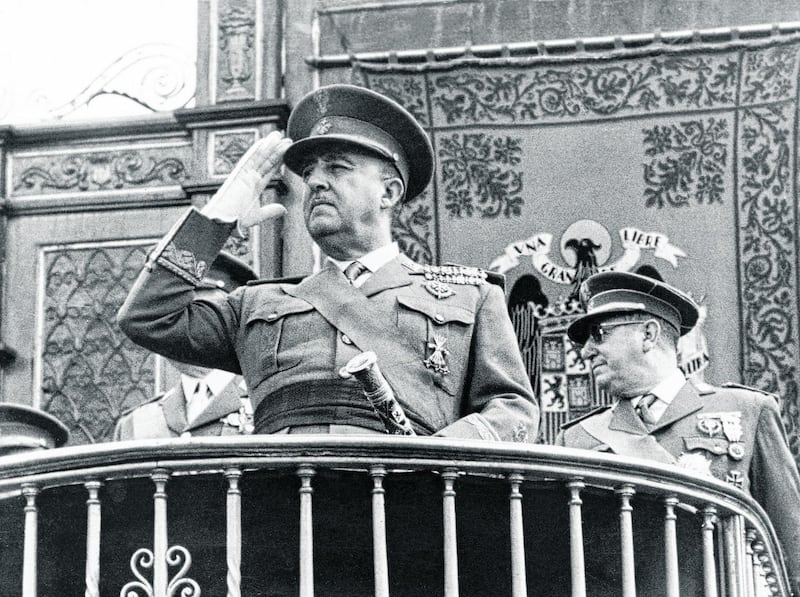The Spanish government has put in process the removal of the remains of the dictator Francisco Franco from his controversial resting place, marking a major step forward for a country that has struggled to deal with its past. But the move has highlighted how sensitive the legacy of Franco remains 43 years after his death.
On Friday the Socialist administration of Pedro Sánchez approved a decree allowing the dictator to be exhumed from the Valley of the Fallen mausoleum, about 95km northwest of Madrid, and given to his family to be buried elsewhere. The decree will be voted on in congress, which is expected to back the initiative.
The government is confident the whole process will be completed by the end of the year, although Franco’s family opposes the initiative.
The Valley of the Fallen has been an uncomfortable reminder of the four-decade dictatorship that followed the 1936-1939 civil war.
More than 30,000 dead are buried in its vaults, many of them in haphazard fashion
At the site a massive esplanade overlooks a wooded valley, and above the monument towers a 150m-tall stone cross. Franco is buried in a basilica drilled into the side of the mountain.
Franco ordered its construction following his victory over the leftist republic in the civil war, and it was completed in 1959. He presented it as a monument to the victims of both sides of the conflict, and more than 30,000 dead are buried in its vaults, many of them in haphazard fashion.
But instead of promoting reconciliation, the Valley of the Fallen glorifies the memory of Franco. His far-right present-day supporters often make pilgrimages there. The fact the dictator was buried there on his death in 1975 amid symbols of his National-Catholic ideology, a version of fascism, makes it a place of repulsion for many Spaniards.

“There can’t be a moment longer of Spanish democracy without putting in order our past,” said deputy prime minister Carmen Calvo on announcing the exhumation decree.
Monument to Hitler?
For many, the Valley of the Fallen is akin to Germany maintaining a monument dedicated to the memory of Hitler.
On the left, many are frustrated that it has taken this long for a government to take on the Valley of the Fallen
But historical memory has been a thorny issue for Spanish governments ever since the return to democracy in the late 1970s. Much of the success of that political “Transition”, as it became known, rested on the willingness of both Franco’s right-wing allies and his leftist enemies to put the recent past out of mind and together build a new parliamentary system. Meanwhile, challenges such as modernising the economy and welfare state were seen as more pressing than seeking retribution for human rights abuses or finding mass graves containing the regime’s many victims.
But with the conservative Popular Party government replaced in June and a left-leaning, albeit fragile, majority supporting Sánchez’s Socialists, the political consensus has shifted.
Uncomfortable issue
For the Popular Party, which was founded by former members of the Franco regime, this remains an uncomfortable issue.
"Reopening old wounds leads to nothing," the party's new leader, Pablo Casado, who was born after Franco's death, said recently. The party has accused the government of breaking the accord that allowed the democratic transition to flourish four decades ago.
Yet on the left, many are frustrated that it has taken this long for a government to take on the Valley of the Fallen. The communist-led United Left has said that not only should Franco’s body be removed from the monument, but that the mausoleum should be stripped of its Francoist symbolism and converted into a centre of memory where the crimes of the dictatorship are explained.
The government has expressed a vague intention to do just that, eventually. But meanwhile, the removal of Franco's body from his sinister mausoleum is the biggest sign yet that Spain is willing to reckon with its own past.












